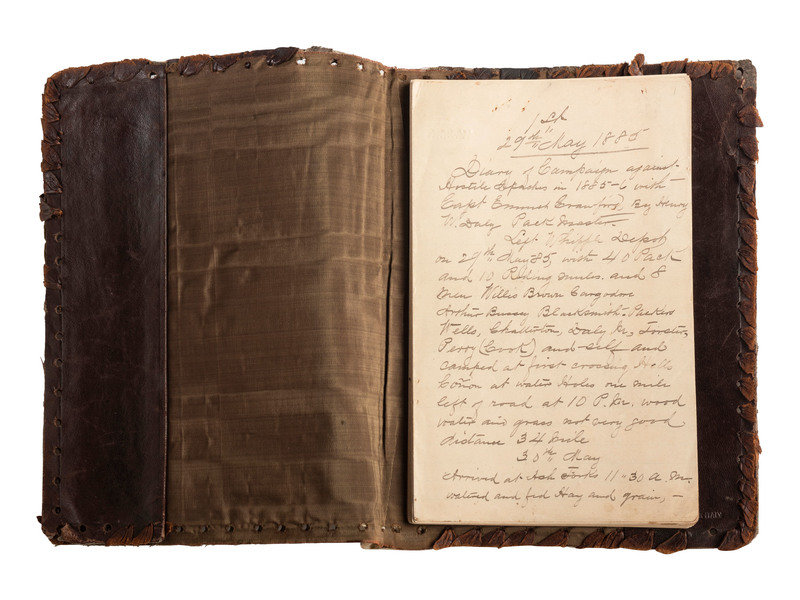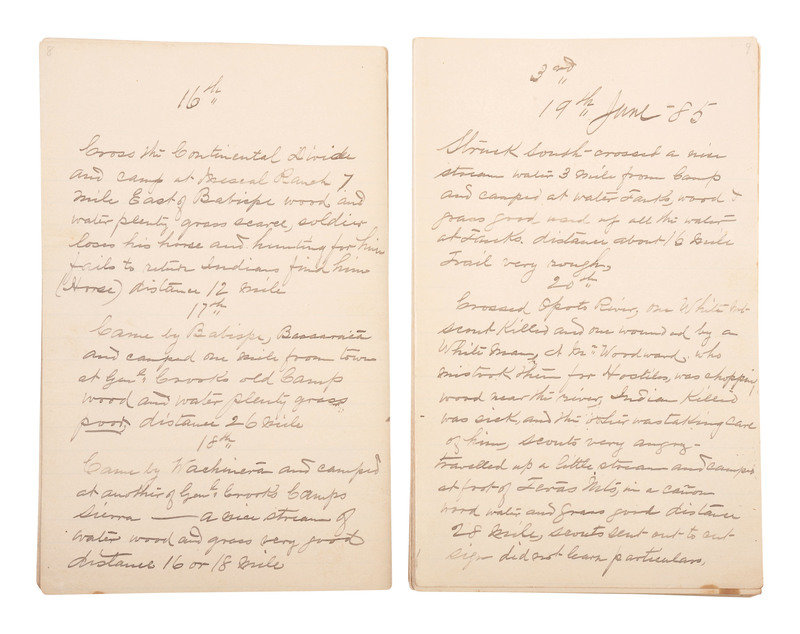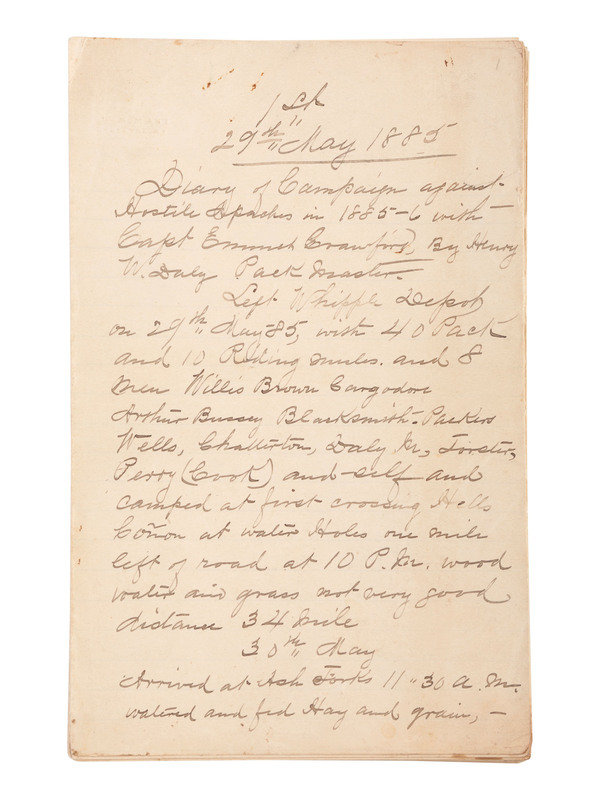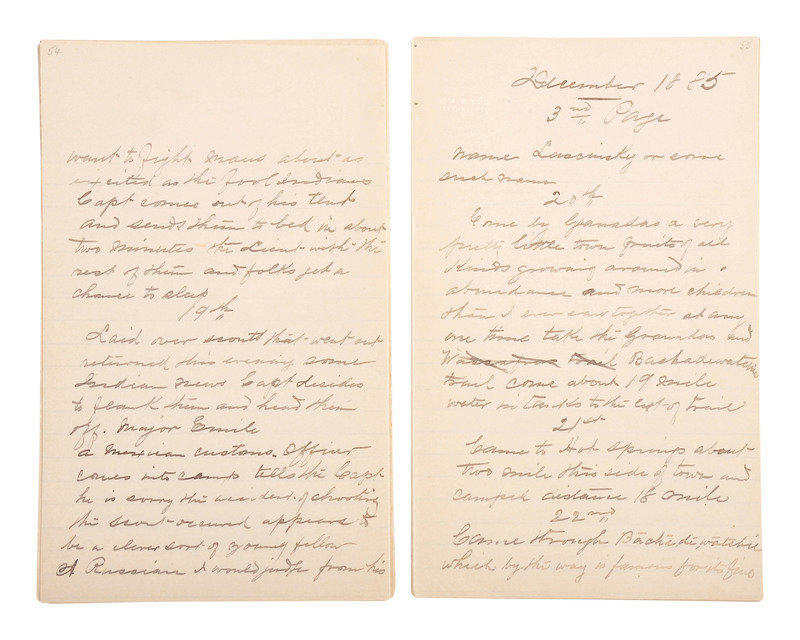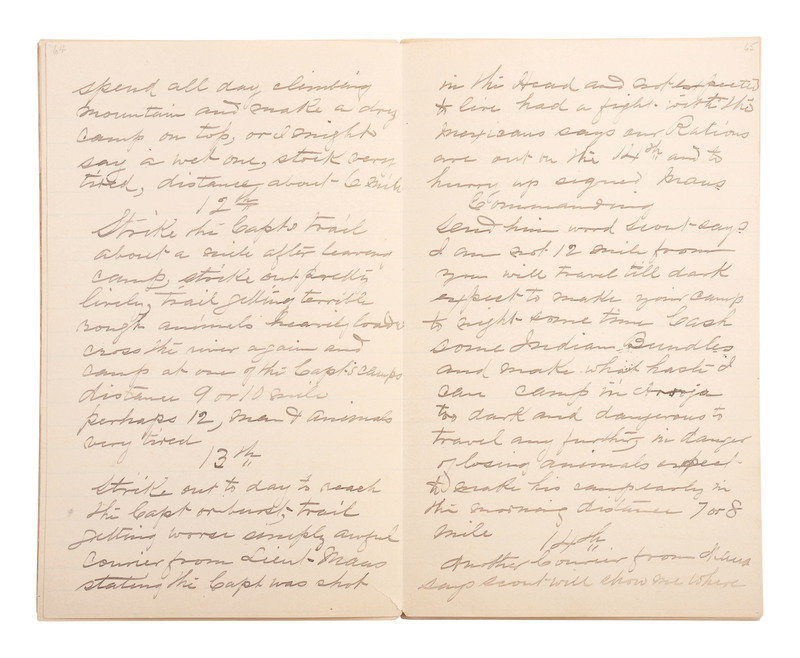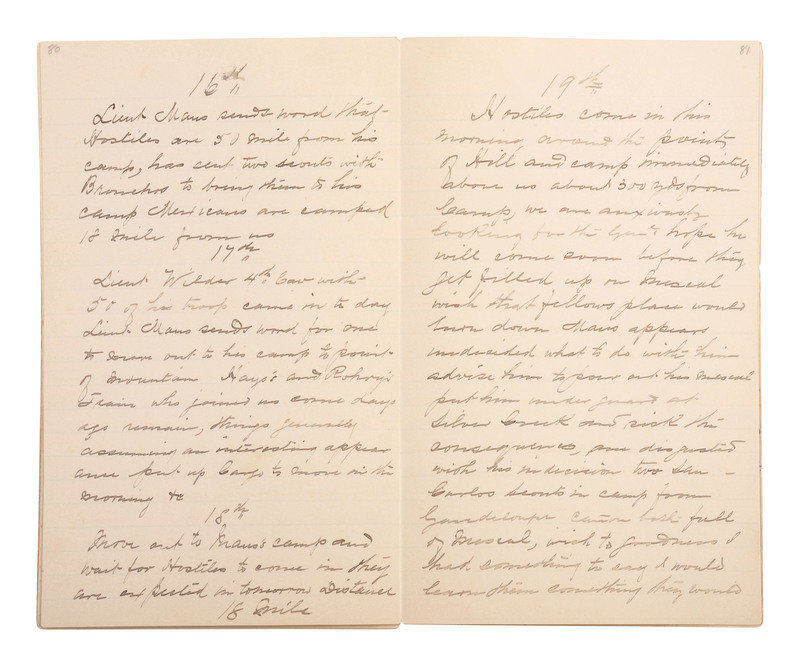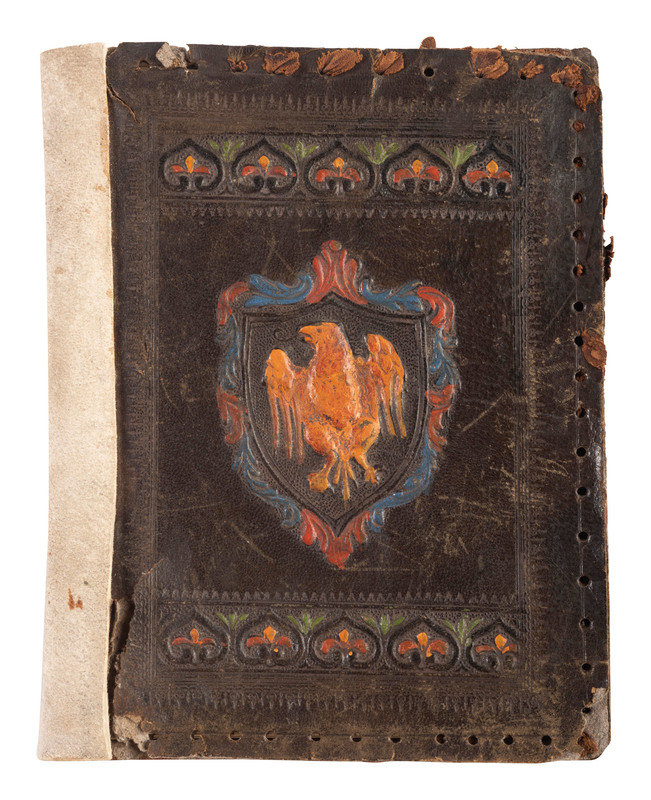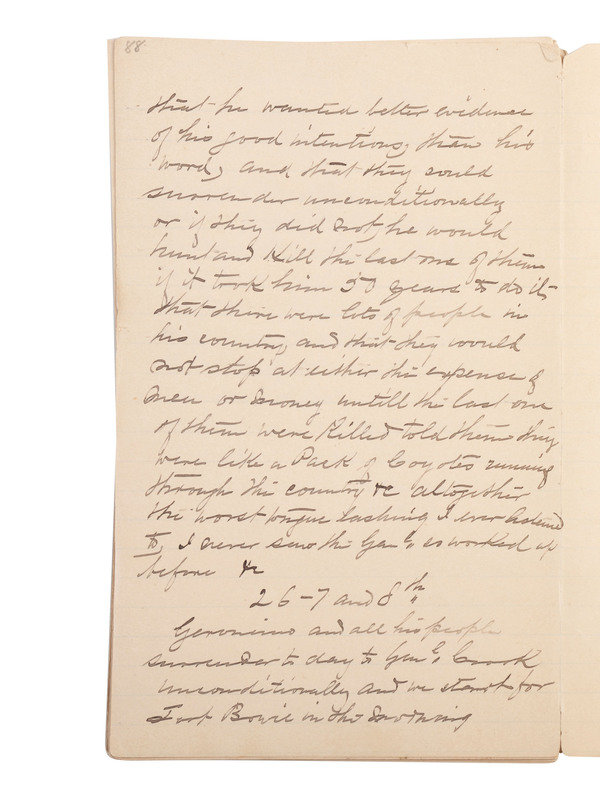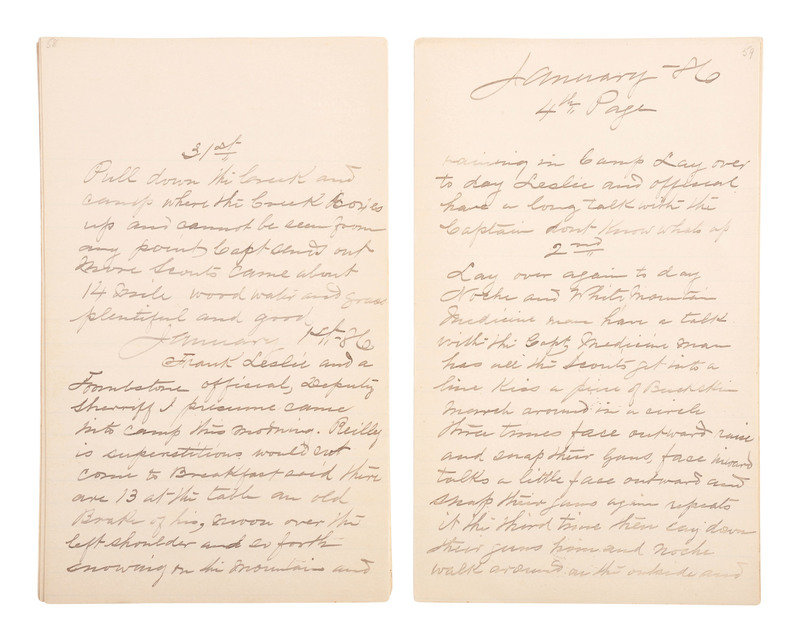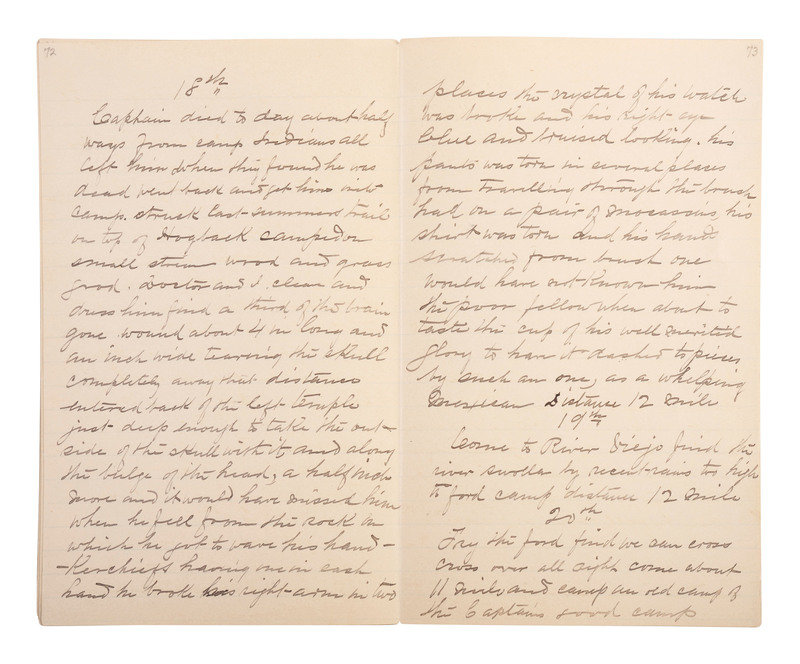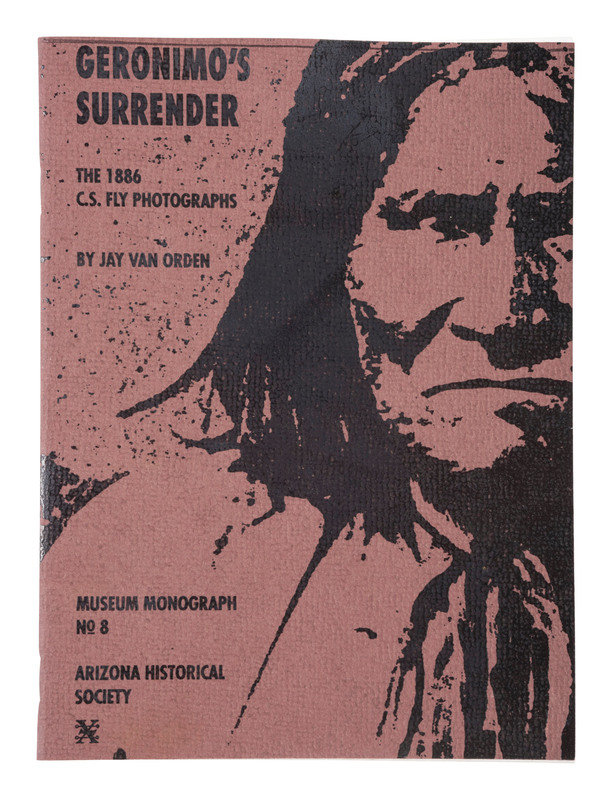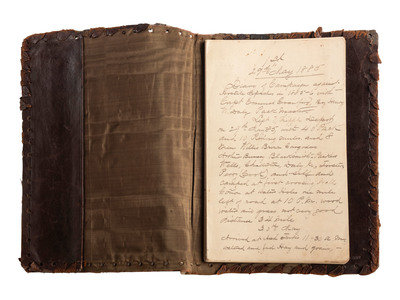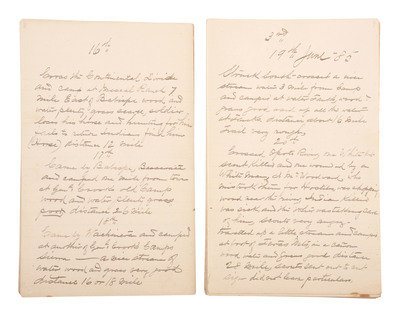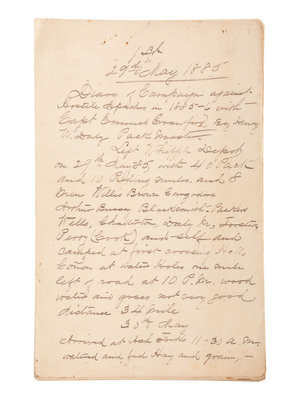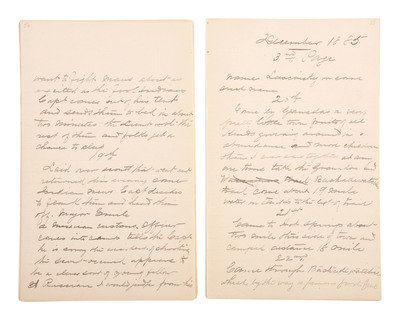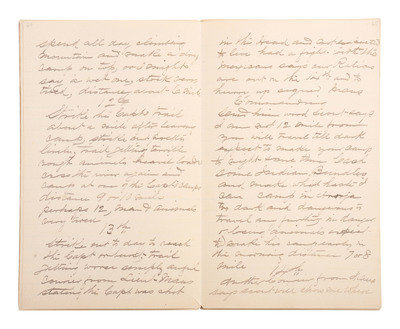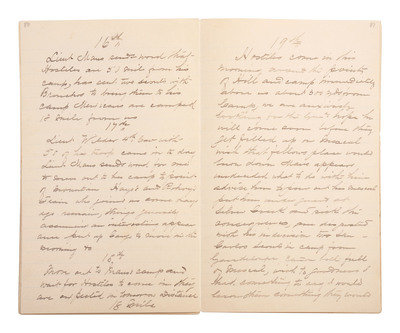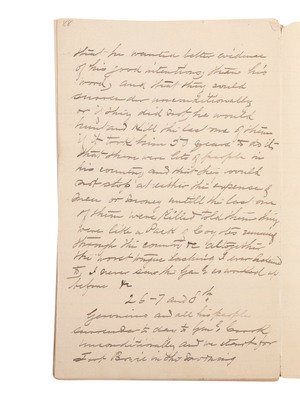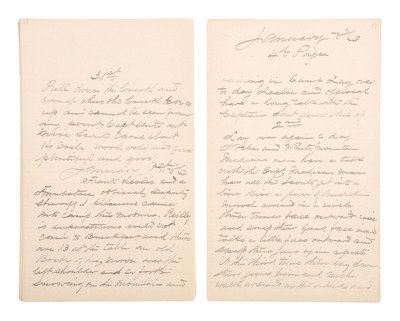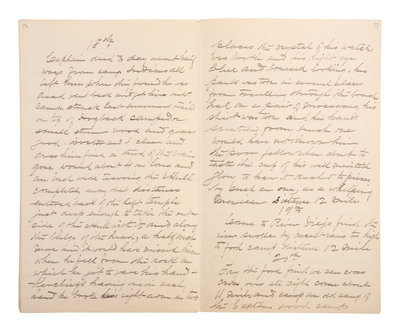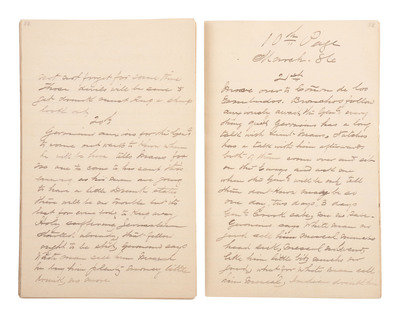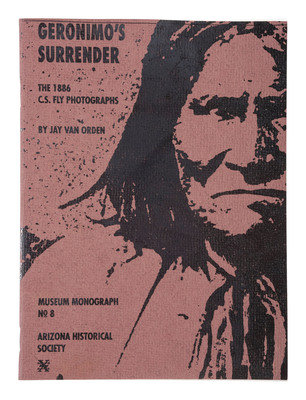Lot 639
[GERONIMO] - [LATE INDIAN WARS]. DALY, Henry W. (1850-1931). Diary of Campaign against Hostile Apaches in 1885-6 with Capt. Emmet Crawford, by Henry W. Daly Pack Master. [Cheyenne, WY], 29 May 1885 to 28 March 1886.
Sale 960 - American Historical Ephemera & Photography
Nov 15, 2021
11:00AM ET
Live / Cincinnati
Own a similar item?
Estimate
$12,000 -
16,000
Price Realized
$75,000
Sold prices are inclusive of Buyer’s Premium
Lot Description
[GERONIMO] - [LATE INDIAN WARS]. DALY, Henry W. (1850-1931). Diary of Campaign against Hostile Apaches in 1885-6 with Capt. Emmet Crawford, by Henry W. Daly Pack Master. [Cheyenne, WY], 29 May 1885 to 28 March 1886.
First-hand account of the pursuit and surrender of Chiricahua Apache leader Geronimo written by Henry W. Daly, a civilian pack master employed by the US Army. 88pp, ink, 5 x 8 in. (light soil, toning, minor chipping to some pages). Includes references to Capt. Emmet Crawford, Tom Horn, Frank Leslie, General George Crook, and many more. Manuscript diary presumed to be a fair copy of field notes taken by Daly during the campaign. Housed in embossed brown leather cover with eagle motif, possibly of the period, but added by consignor at a later date.
Daly was an Irish immigrant who learned the trade of mule train packing while in New Mexico Territory in the 1870s. In May 1885 he was employed by the US Army serving Captain Emmet Crawford (1844-1886), a cavalry officer whose detachment was tasked with locating and apprehending Geronimo following a “breakout” from the reservation. The diary opens nearly two weeks after Geronimo’s most recent escape as Daly departs Whipple Depot on 29 May 1885 “with 40 pack and 10 Riding mules and 8 men” including a cargodore, blacksmith, packers, and a cook. After meeting Captain Crawford and receiving instructions in Deming, New Mexico, Daly joins the army soldiers as they commence their search efforts. Regular entries are made through September 12th, at which point the troops, having failed to establish contact with Geronimo, return to Fort Bowie.
Entries resume on November 26, 1885, with Daly noting that Crawford has returned from Fort Apache with 100 scouts. The detachment departs on the 29th once again in pursuit throughout the harsh Southwestern terrain. Daly writes on January 3, 1886, that Captain Crawford starts out in the lead of “quite a goodly string of fighting men there is a stamp of determination in the whole outfit and may the Capt have the success he deserves.” Just over a week later, on January 9, 1886, Crawford and his detachment of Apache scouts did succeed at last in locating Geronimo’s camp. However, Crawford was not destined to reap the rewards of his arduous pursuit. On January 11th, prior to a meeting with Geronimo, Crawford was shot in the head by a Mexican Army Irregular. Daly learns of this on the 13th, writing in the diary: “Courier from Lieut. Maus stating the Capt was shot in the Head and not expected to live had a fight with the Mexicans says our Rations are out on the 14th and to hurry up signed Maus Commanding.” Daly’s entries continue thereafter elaborating on the start of negotiations with Geronimo and noting the death of Crawford on the 18th. Daly leaves little doubt of his high regard for the captain writing that Crawford was “was about to taste the cup of his well merited glory” when it was “dashed to pieces.”
On March 18, 1886, Daly is in Maus’s camp awaiting the “Hostiles to come in” to meet General Crook as agreed to by Geronimo months before. A day later the Apache warriors arrive. Daly notes on the 20th that “Geronimo [was] anxious for the Genl. to come and wants to know when he will be here. Tells Maus for no one to come to his camp this evening as his men are going to have a little Drunk states there will be no trouble but its best for every body to keep away.” Days drag on as the group awaits Crook, allowing Daly the opportunity to interact with Geronimo. His conversations include discussion of “Charley Tribolet,” a trader who sold mescal to Geronimo and other Apache, and later instigated Geronimo’s surreptitious escape from the US Army.
At last, on March 25th, Crook and Geronimo begin their negotiations. Daly notes in his diary entry for that day: “The Genl. said he listened to what he [Geronimo] had to say, and asked him, what had the troubles he complained of had to do with his killing innocent white men, women, and children…. He told Geronimo that he has lied to him that he was lying to him now. That he wanted better evidence of his good intentions than his word, and that they should surrender unconditionally or if they did not, he would hunt and kill the last one of them if it took him 50 years to do it…Told them they were like a pack of Coyotes running through the country &c. altogether the worst tongue lashing I ever listened to, I never saw the Genl. so worked up before.” Daly’s final diary entry then follows: “Geronimo and all his people surrender today to Genl. Crook unconditionally and we start for Fort Bowie in the morning.”
AN IMPORTANT EYEWITNESS ACCOUNT OF THE RELENTLESS PURSUIT AND EVENTUAL CAPTURE OF GERONIMO
Daly’s captivating diary captures critical aspects of the Geronimo campaign: the elusiveness of the Apache warriors, the difficulty of traversing the rugged terrain, the complexity of US Army operations in the remote Southwestern wilderness, and the powerful persona of one of the American West’s most formidable Native American leaders.
Daly would spend the next thirty-five years in the service of the United States rising to become the Army’s leading authority on the use of mules and pack horses. He served as Chief Packer for the Quartermaster Department, became an instructor of pack operations at West Point, and authored multiple manuals on pack transportation for the US Army. Having attained the rank of major, he was discharged from the army in 1920.
[With:] Van Orden, Jay. Geronimo's Surrender: The 1886 C.S. Fly Photographs. Museum Monograph No. 8. Tucson: Arizona Historical Society, 2001.
[With:] Van Orden, Jay. Geronimo's Surrender: The 1886 C.S. Fly Photographs. Museum Monograph No. 8. Tucson: Arizona Historical Society, 2001.
Sold to Benefit the U.S. Children's Center on Historical Education and Advocacy
Condition Report
Contact Information
Auction Specialist
